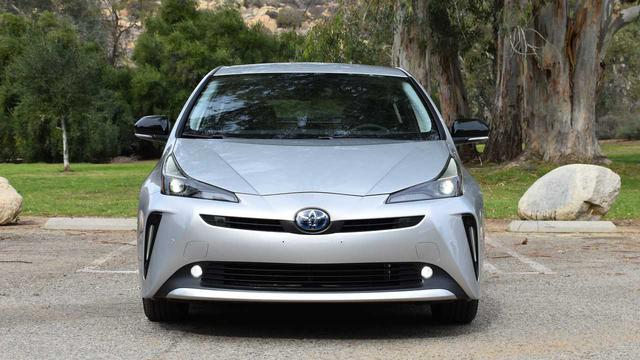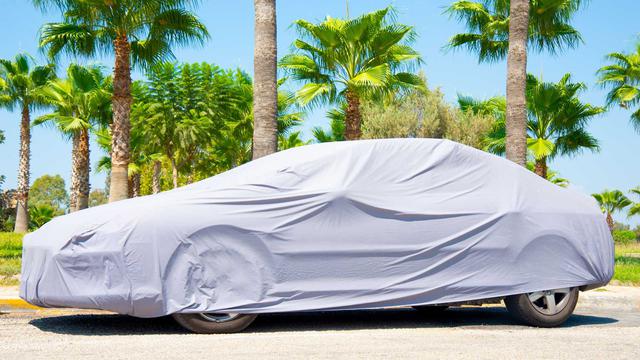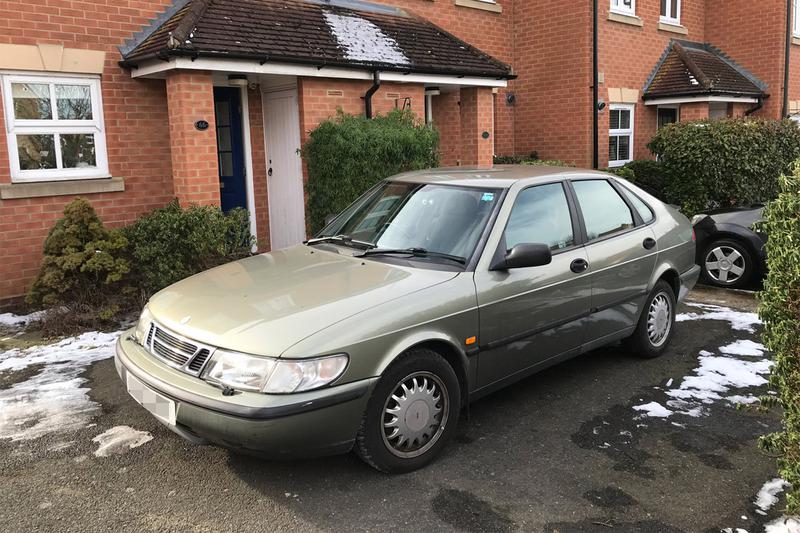A few weeks ago, Toyota called me up and offered me a week behind the wheel of a 2021 Prius XLE Nightshade, and I had to suppress my snickering. But after thinking on it for a moment, I remembered that, like any other jaded Millennial, I always enjoy a good hate-watch or hate-scroll, and maybe a Prius would be something like a hate-drive. Plus, it’s not always Boxsters and Bentleys – I needed some time in the little Toyota to keep humble.
I must admit that in spite of my general sardonic attitude toward the Prius, I also harbored a tiny, secret optimism somewhere deep inside. Most of me wanted the Prius to be utterly, hilariously unpleasant so that I could justify the expletive-laden monologue I rehearse every time a hybrid cuts me off without signaling or goes five under the speed limit in the left lane. But a small corner of my heart was craving a Cinderella story – I knew the Prius wasn’t Final Four material, but could it at least avoid first-round elimination to earn my respect?
TL;dr, yes it certainly could, as I learned in one long weekend on the interstate. In fact, the blacked-out Nightshade didn’t just earn my appreciation, it taught me that there’s fun to be had behind the wheel of a Prius, in addition to the good fuel economy, cavernous cargo space, and decently comfortable front seats. After all, a big part of hypermiling is taking every turn, flyover, and corner as fast as possible to minimize power use on exit. People say low-powered sports cars are all about momentum, and the Toyota Prius proves that dorky little hybrids can get in on the fun too.
A Noble Steed
I was outside chatting with a neighbor when the hybrid hatchback showed up. Remembering the Porsche I’d had in the driveway a few weeks before, he snickered, “What’d you do to tick off your boss?” But once we inspected the Prius Nightshade together, we both admitted a surprised appreciation for the contrast between its Classic Silver paint and blacked-out elements – wheel covers, fin antenna, door handles, and badging. Although the new-for-2022 Nightshade styling package doesn’t add any performance, it still makes for a borderline-cool Prius.
My neighbor and I exchanged “not bad” smirks before I headed inside to finish my lunch break by planning out a trip my boyfriend Noah and I would be taking to visit his parents. The Prius would be our transportation device – what better than a parsimonious hybrid for a long freeway trip? – but all of a sudden, its mission became far nobler. You see, Noah’s parents live not far from an auto scrapyard that occasionally has some rare gems, and in preparation for the trip, I checked the online inventory to see if the salvagers could help us replenish the revolving door of spare parts we need for our stable.
And there they were. A set of M Sport sport seats with the same wiring and the same airbags as my 2006 Z4, which I had been looking for since the first time I’d perched myself in the standard, unsupportive roller coaster seats that BMW somehow felt were appropriate for its sporty roadster. In good shape and needing only minor reconditioning, I sent the scrapyard a low-ball offer, which I was surprised they accepted. Suddenly our trip to visit the parents would be a search-and-rescue mission, and the Prius would be the vehicle that saved those seats from a trip to the shredder.
shop now
save over $3,400 on average off MSRP* on a new Toyota Prius
shop now
The Road Home
After a few hours on Interstate 5, Noah and I had barely any complaints about Toyota’s legendarily lozenge-shaped transport pod. The automaker’s SofTex faux leather is supple and perfectly in line with the Prius’ eco-friendly mission, and it drapes over a pair of front seats that offer decent support. As on lesser XLEs, the Nightshade gets an eight-way power driver’s seat, but only four-way manual adjustability for the copilot. I was perfectly comfortable on the trip, but Noah did mention a lack of thigh support that led to some tired-bum numbness a few hours in.
The Prius is also quieter and more composed at speed than I was expecting. It’s no S-Class, sure, but external noises are impressively muted and the Toyota tracks straight and true, even when facing the stiff cross-breezes we regularly endure in Central California. However, that wind had no trouble overwhelming the 1.8-liter inline-four and its partner in crime, a 53-kilowatt electric motor.
With only 121 horsepower combined between the two, the 3,075-pound Prius has a difficult time reaching freeway speeds, and maintaining the prevailing traffic’s 80 miles per hour requires a lot of throttle, especially when climbing hills. As a result, overall fuel consumption was worse than expected, at an indicated 46 miles per gallon by the time we arrived at the parents’.
(To Toyota’s credit, the Prius fares much better when commuting around town – I regularly saw single-trip ratings of 55 mpg, with one especially careful 10-mile outing netting 62.)

Prius Primers:
2021 Toyota Prius Review: Fading Fuel Sipper2017 Toyota Prius Prime Review: The Argument Against Cord-Cutting
Part of the drive north entailed some twisty two-lane highway, and here again, the Prius was more enjoyable than expected. Like most of the company’s products, the hybrid is built on the Toyota New Global Architecture, a stiff, lightweight platform that allows the suspension to provide a good balance of comfort and stability. As a result, the steering is linear and sharp enough for decent cornering, and body motions are checked reasonably well. The regenerative brakes are hard to modulate smoothly, but they arrest the Prius’ modest velocity without any drama.
Of course, the Toyota never forgets its mission as humble family transport, so push too hard and you’ll experience safe, predictable understeer. And there’s no getting around the fact that its meager powertrain makes the Prius more of a momentum car than anything currently on the market. But not only is the current generation more enjoyable than any Prius before it, it’s downright silly to pound down a winding road, electric motors and CVT and Atkinson-cycle four-cylinder spinning away as hard as they can. Give it the beans and a Prius is the very definition of driving a slow car fast – a five-door, front-drive, electrified NA Miata.
Rescue Me
We left the Prius parked most of the time we were visiting Noah’s folks, choosing to walk around town instead. The visit was great – good food, a movie or two, and lots of playtime with their new puppy – but I must admit that I was growing more excited for the departure with every passing hour. Not because of any unpleasantness with the in-laws, no, but because I wanted my new BMW seats, gosh-darnit.
The scrapyard had already pulled them from their donor car, a sad little Monaco Blue Z4 3.0si that met a K-rail at speed, by the time we arrived. To my delight, they looked better than the photos, aside from some missing plastic trim and one unfortunate puncture in the leather. I happily forked over the cash, and we heave-hoed the seats outside to acquaint ourselves with the Prius’ next magic trick.
Folding the 60/40 split rear seat down expanded the car’s already-impressive 27.4 cubic feet of cargo space to a solid 50.1, and although there’s a slight step between the cargo floor and the seatback, the space back there is immensely useful. Slotting the heavy leather bucket seats through the big hatch was a breeze, and they both fit in back, L-7 style, with room to spare. Draped in moving blankets to protect the Prius’ interior, the seats were ready for their new home, a seven-hour trip away.
Sensible Servant
The inbound drive was as uneventful and pleasant as the outbound, and I made abundant use of the hybrid’s standard Toyota Safety Sense 2.0 active technologies. With adaptive cruise control and lane tracing assist, the Prius is capable of Level 2 driver assistance, and it works rather seamlessly, even in the heavy Sunday traffic that always besets Interstate 5 southbound. Also appreciated by my copilot was the Prius’ standard on-board Wi-Fi, a feature that’s becoming more common on modern cars but is still always nice to have.
The rest of the tech suite is getting pretty stale, however. While all Priuses have Apple CarPlay and Android Auto, they require a wired connection, and on the Nightshade, they’re displayed on a smallish 7.0-inch touchscreen running Toyota’s previous-generation infotainment software. The flagship Prius Limited gets a much more impressive 11.2-inch display, but the software is still outdated – all other models make do with the small screen.
The Lynchpin
With the car safely nestled back in my driveway, I felt genuine appreciation for the thing. Stylish and sporty it isn’t, but the Prius is an efficient little Swiss army knife. It gave Noah and me a comfortable place to hang out for 1,000 miles, got an impressive average of 48 miles per gallon, and rather nobly, helped to enhance the driving experience of my personal roadster by way of those neat sport buckets it carried home.
The next weekend, I installed those seats in my Z4, and they fit and operated perfectly. The first drive around the block proved them to be the single greatest improvement I’ve made to that car thanks to abundant lateral support and a lower seating position – key components of a good sports car. And I have the Prius to thank for that. In spite of its supervillain status among car enthusiasts, the hybrid hatchback was the lynchpin in an operation that made my Bimmer better than ever, earning a place in my heart in the process. That the Toyota Prius Nightshade is a comfortable, thrifty, and competent road tripper is only a bonus.
What is the Toyota Prius Nightshade?
Toyota’s Nightshade editions are cars that get darkened exterior accents, typically based on well-equipped mid-range models. The Prius Nightshade is based on the XLE trim, which means it has SofTex upholstery, heated seats, and a wireless phone charger among other niceties. The Nightshade brings dark badging; gloss black mirror caps, door handles; and sharkfin antenna; and black aero wheel covers.
Does the Toyota Prius Nightshade get good fuel economy?
The EPA rates the Toyota Prius Nightshade at 54 miles per gallon city, 50 highway, and 52 combined. However, like many hybrids, those numbers depend heavily on driving style. The Prius has an eco coach that scores acceleration, braking, and speed consistency to help drivers maximize their efficiency.
The EPA rates the Toyota Prius Nightshade at 54 miles per gallon city, 50 highway, and 52 combined. However, like many hybrids, those numbers depend heavily on driving style. The Prius has an eco coach that scores acceleration, braking, and speed consistency to help drivers maximize their efficiency.
Is the Toyota Prius safe?
The Toyota Prius gets top crashworthiness scores on all of the IIHS tests except the passenger side small overlap test, where it earns an acceptable rating. The Prius earns five out of five stars on NHTSA’s overall scale. The hybrid comes standard with Toyota Safety Sense 2.0, including full-speed adaptive cruise control, automatic emergency braking, lane-centering assistance and lane departure prevention, automatic high beams, and more.




